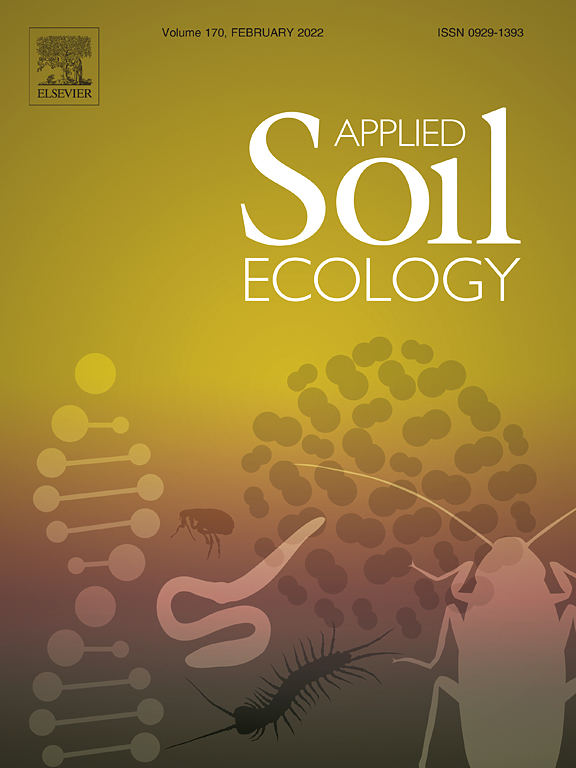Ver ítem
- xmlui.general.dspace_homeCentros e Institutos de InvestigaciónCICVyA. Centro de Investigación en Ciencias Veterinarias y AgronómicasInstituto de Microbiología y Zoología AgrícolaArtículos científicosxmlui.ArtifactBrowser.ItemViewer.trail
- Inicio
- Centros e Institutos de Investigación
- CICVyA. Centro de Investigación en Ciencias Veterinarias y Agronómicas
- Instituto de Microbiología y Zoología Agrícola
- Artículos científicos
- Ver ítem
New entomopathogenic strain of Bacillus thuringiensis is able to solubilize different sources of inorganic phosphates
Resumen
Phosphate-solubilizing strain INTA 293-1 from a soil sample of Corrientes province (Argentina) was identified as Bacillus thuringiensis based on its faculty to produce crystalline inclusions during sporulation and 16S rDNA sequence similarity. INTA 293-1 was found to produce bipyramidal and cuboidal crystals, containing major proteins of ca. 130 and 65 kDa respectively, resembling those present in Lepidoptera- and Diptera-active strains. Accordingly, INTA
[ver mas...]
Phosphate-solubilizing strain INTA 293-1 from a soil sample of Corrientes province (Argentina) was identified as Bacillus thuringiensis based on its faculty to produce crystalline inclusions during sporulation and 16S rDNA sequence similarity. INTA 293-1 was found to produce bipyramidal and cuboidal crystals, containing major proteins of ca. 130 and 65 kDa respectively, resembling those present in Lepidoptera- and Diptera-active strains. Accordingly, INTA 293-1 showed insecticidal activity against lepidopteran and dipteran larvae. No insecticidal activity nor evident effects on the normal development of coleopteran larvae or nematodes were observed. Screening of cry, cyt and vip genes showed that INTA 293-1 contains cry1Ac, cry1Ia, cry2Aa, cry2Ab and vip3Aa genes. Furthermore, this new entomopathogenic strain of B. thuringiensis was able to solubilize different sources of inorganic phosphates in liquid media following similar solubilization kinetics. INTA 293-1 was effective in solubilizing hydroxyapatite, patagonic phosphate rock, and to a lesser extent the aluminium phosphate. The differential behaviour between them may be explained by differences in INTA 293-1 survival. Phosphate solubilization was associated with pH reduction. This study reveals a little-explored aspect of B. thuringiensis and paves the way for the development of new agrobiological products with multiple modes of action.
[Cerrar]

Fuente
Applied Soil Ecology 160 : 103839 (April 2021)
Fecha
2021-04-01
Editorial
Elsevier
ISSN
0929-1393
Documentos Relacionados
Formato
pdf
Tipo de documento
artículo
Proyectos
(ver más)
INTA/PNPV-1135033/AR./Desarrollo de herramientas para el manejo integrado de artrópodos perjudiciales.
INTA/2019-PD-E4-I069-001/2019-PD-E4-I069-001/AR./Bioprospección y caracterización de microorganismos benéficos para la protección y producción vegetal
Palabras Claves
Derechos de acceso
Restringido
 Excepto donde se diga explicitamente, este item se publica bajo la siguiente descripción: Creative Commons Attribution-NonCommercial-ShareAlike 2.5 Unported (CC BY-NC-SA 2.5)
Excepto donde se diga explicitamente, este item se publica bajo la siguiente descripción: Creative Commons Attribution-NonCommercial-ShareAlike 2.5 Unported (CC BY-NC-SA 2.5)

